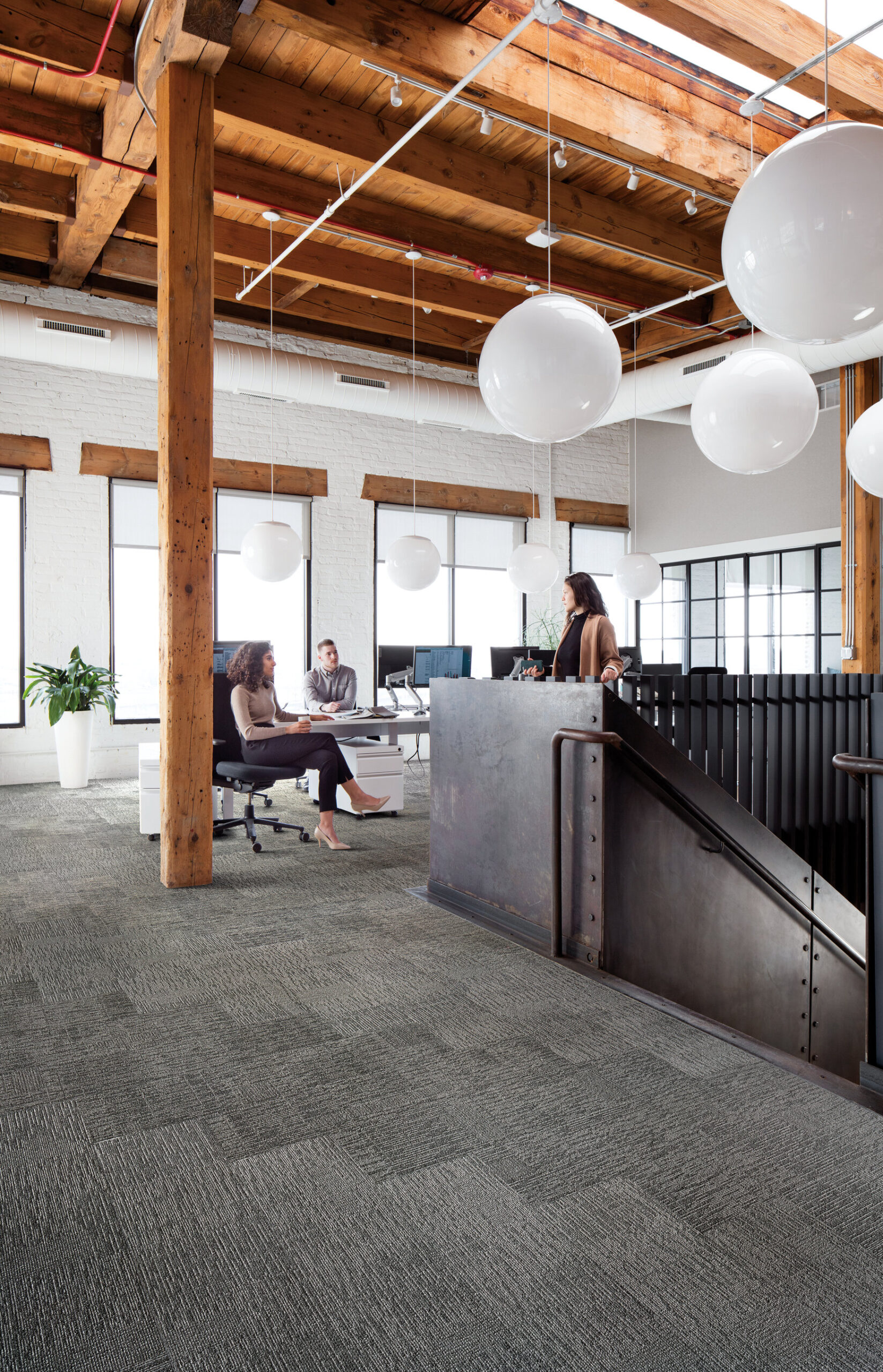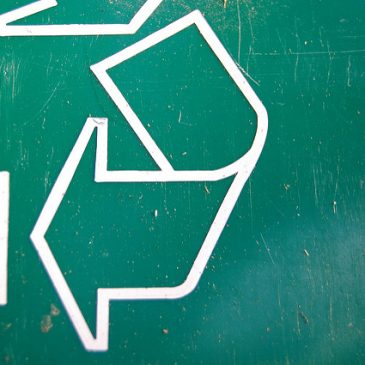Purpose At Work
How Electrolux Group Drives Sustainable Living & Consumer Behavior Change


The manufacturing and building sectors have long been major contributors to the environmental emergency. Of late, though, some vanguards in manufacturing and building are also leading the charge toward impactful social- and environmental purpose by, for example, finding innovative ways to produce carbon net-positive products.
Interface, a global manufacturer of commercial and residential flooring, and the world’s largest manufacturer of modular tile, launched a carbon-negative flooring product in 2020. It was a milestone moment for the Atlanta-based B2B company, which has been a circularity-in-manufacturing pioneer for more than a quarter century.
A founder floored
It all began with the “Mission Zero” plan its late founder, Ray C. Anderson, instituted in 1994. “Interface had started in the early seventies with an innovative product idea—the concept of modular flooring or what everyone now knows as ‘carpet tiles’ or ‘carpet squares’,” says Erin Meezan, Chief Sustainability Officer. “And Ray Anderson built it into a billion-dollar business. Then about 25 years into its life, he had an epiphany. A fundamental change of mindset about the role of business and sustainability.” Anderson – everyone calls him “Ray” – had launched the company on an audacious path to become not only a sustainable – but a regenerative – business.
Why this massive change of heart and mind? Ray had read ecologist and entrepreneur Paul Hawken’s book, The Ecology of Commerce—what Ray described as a “spear in the chest moment” for him and his company. Neither was ever the same again.
Getting in on the ground floor
Ray led his industry and beyond with the decision not to be complicit in the environmental crisis anymore. Even though few – if any – of its competitors were on the same path in the mid ’90s, Interface set aggressive zero targets in many areas: zero waste to landfill, zero fossil-fuel energy use, zero process water use, and zero greenhouse gas emissions (GGEs). In 2019, the company celebrated the 25th anniversary of Ray’s original mission—and some pretty impressive achievements:
By then, it had reduced its GGEs by 95 percent, the company reported. Ninety-eight percent of the energy it used around the world at the time derived from renewable sources (100 percent in the US and Europe). It had cut its waste to landfill by 92 percent.
It wasn’t enough for the new company leadership. Though “we’ve spent the better part of the last 26 years getting to zero,” says Meezan, “now we’re working on what’s beyond zero.”
Interface demonstrates a key point in the movement of movements toward a more circular economy and a healthier environment. Everyone must do their part. This is all about the We. No one else will swoop in and save us. That likely means you—whatever your line. “When we think about the contributors to global carbon emissions, we might think about fossil fuels first. We think about transportation,” says Meezan. “We don’t immediately consider buildings.”
But close to 40 percent of global carbon emissions come from the “built environment sector,” which includes building and construction, along with all its associated materials and operation, as well as from renovation projects. “So, it’s a little hidden.”
There’s a lesson there for all of us to honestly interrogate the impact of our business and industry, and identify where we’re contributing to the crisis—then address those problems.
But that’s easier said than done, of course. Ray’s epiphany and sense of personal responsibility alone wouldn’t be enough to move the needle. The company would have to build momentum of believers. It would have to convince itself – not to mention its industry – of some uncomfortable truths about its negative impact—then execute a difficult transition.
Grounded in nature’s model of cooperation
Right away, Ray convened an environmental “dream team,” which decided that “the best model for a high-performing, sustainable company is nature,” Meezan tells me. “So, we looked at nature. We created a plan for how the business could function like nature at the systems level.” Here the aim is circularity “instead of a take, make, waste model,” says Meezan. It meant using more renewable resources and wasting much less.
It couldn’t do this on its own. As it began to succeed, Interface scaled its impact by building and leading a coalition of interrelated partners. It aligned with authors, activists, scientists, and entrepreneurs to study the climate emergency – especially as it concerned carbon emissions – and to implement solutions. Partners – especially specialists in the nonprofit foundation sector – are critical to success, Interface found. The company and the coalition it co-founded realized we can reverse the climate emergency through sheer human ingenuity and some change of perspective—if everyone works together.
In 2016, Interface launched a new sustainability mission called “Climate Take Back,” to share research and encourage other companies to follow its roadmap. Since then, it’s spearheaded an “Industrial Re-Revolution.” It’s collaborating around factories, production methods, and new product development. Its purpose is the common good. Its purpose allows it to Lead With We.
For example, it co-founded the Materials Carbon Action Network (materialsCAN) with collaborators Gensler, Skanska, Armstrong, CertainTeed, and USG. The materialsCAN convened its industry to discuss solutions for reducing embodied carbon in the materials it employed.
“When we made the shift in 2016, from zero to beyond zero,” says Meezan, “we imagined four pathways for the business. The first was products that store carbon. Because to us, it was the most literal representation of a huge shift forward.” But that would require a large-scale systems change. “Every time we make a leap, we have to think about products, materials, supply chain, and factories. So, the “beyond zero” version of factories was imagining them as high performing ecosystems”—like nature provides.

Interface began a revolutionary collaboration with Janine Benyus, the architect of the nature-inspired innovation space. Collaborating on her Biomimicry 3.8 initiative, they aimed to develop a radical approach by which Interface and other companies could transform facilities from the old “zero footprint” modes that once seemed sufficient by Ecological Performance Standards—so that there would be no functional distinction between the factory and surrounding wildlands. It called the high-performing, nature-mimicking, regenerative ecosystem methodology “Factory as a Forest” (FaaF).
Calling supply chain partners on the carpet
Although Interface took a hit during the pandemic slowdown, its overall trajectory is stable or increasing since it started its ongoing transformations, proving a business can disrupt—and deliver. For Interface, from the beginning, this meant getting its supply chain on board, even as it “got its own house in order.”
A company, Meezan argues, “can be really fantastic about creating efficient offices and efficient factories, but that is a very small part of the overall environmental impact.” Where can you have the most “material” (significant and meaningful) impact? It might be energy- or process efficiency. Or the biggest environmental problem might be the use phase, once your product is in the customer/consumer’s hand, Meezan counsels, which can be uncovered through a good “life cycle assessment” of your products and processes.
“If you want to get serious and really change, you’ve got to change your supply chain. And for us, it’s the raw material supply chain,” Meezan says. One item in particular, nylon (“the beautiful, fluffy, colorful stuff on the top of a carpet”) exerted the greatest environmental impact. “So we started engaging those suppliers 25 years ago. Those were the first or second conversations we had.”
As soon as it decided on its shift to regenerative processes, “the next immediate phone call was to the CEOs of our nylon suppliers, saying we can’t get anywhere close to where we want to go—if we’re not involving you.” Interface’s transformation had “started at the top, and we started at the top of their organizations. Sharing our vision from our CEO to their CEO.” You don’t get impact without contagion.
Over the years, Interface has reduced the environmental footprint of its carpet products by 76 percent. “And that is largely based on another organization, Aquafell, one of our nylon suppliers, creating recycled nylon. That was a game changer,” says Meezan, and others followed. That wouldn’t have happened had every company stuck to the old ways of doing business, wherein everyone looks after only themselves and the bottom line.
“If all the carpet manufacturers really wanted circular models, we would have a very different dynamic then where we find ourselves,” Meezan says. “I think many other companies who are pioneers find this as well, when you’re the one guy in the industry or you’re the early pioneer in the industry. Sometimes it isn’t even just about how do we change, how do we influence competitors. It’s about fundamentally changing the whole market or the policy environment. And it’s really hard to do that as one company.”
We must all lead this transformation.
Policy groundwork
And part of the We must include the public sector. Without clear, wide, and progressive policy reforms on issues such a market re-entry of disused global construction and office materials that can be recycled into new building products, Interface and others like it will continue to face the uphill battle against policy- and market barriers to such recycling.
For example, in many parts of the world, “There aren’t easy collection centers to drop off recycled commercial office materials, and there aren’t laws. There’s actually only one law in the US, which is one of our biggest markets, in the state of California. It mandates that used carpet actually can’t go to a landfill, but it must be recycled.”
And in that state Interface reports recycling rates that are around 25 percent. “But absent some sort of either market structure or policy initiative that has taken the form of producer responsibility laws for carpet, we really struggle as an industry to do it. The entire industry is not committed to recycling,” Meezan says.
For another good example of policy working in tandem with industry to solve global challenges, Meezan points again to California – the sixth largest economy in the world – which in 2017 passed the Buy Clean California initiative into law. It ensures the procurement processes for infrastructure support California’s goals to reduce climate change pollution.
Breaking ground on a net positive product
I’ve said it here man times that purpose is an innovation driver. Consider Interface’s company’s Embodied Beauty™ Collection. “Cradle-to-gate,” it’s carbon negative, Meezan says. Carbon Negative means that mean that the Global Warming Potential emissions are net
negative. And that means that “more Greenhouse Gases have been removed from the atmosphere than have been emitted into the atmosphere during the creation of the product.”
“That’s because some of those biomaterials store carbon,” Meezan explains, which, when combined with low footprint manufacturing and low impact of some recycled materials involved. It’s nothing short of revolutionary.
En route to developing the carbon negative line, Interface needed to help develop specific tools, processes, and partnerships to enable its whole industry to adopt its tech, not to mention innovate their own products to solve the greater environmental problem. For example, it worked with allies in industry and academia as a critical early partner, funder, and supporter of an environmental labeling tool for Microsoft called the Embodied Carbon in Construction Calculator (EC3). Built by Skanska and the Carbon Leadership Forum, EC3 was the first free, open-source tool of its kind. EC3 “takes environmental product declarations and carbon footprint data takes for a range of products such as flooring, construction materials, wallboard, data cabling … and it dumps all that EPD data into a free online comparison tool that allows people who are doing buildings and offices to look at GWP, and find and compare materials.”
When customers are educated and have the option to pick a lower carbon option, “that’s going to be a great accelerator to [adoption of] not just … [Inteface’s] carbon neutral and carbon negative flooring products, but to make those kinds of decisions across their entire building project,” says Meezan. “It’s not enough to just do the thing. It about the We. How are we building a broader movement?”
A magic carpet that leads to treasure?
Or course at every step of the way Interface had to demonstrate viability—to shareholders, investors, and customers. To prove that doing good in business is good for business.
Meezan says, “When shift your business towards a multi-stakeholder model … you still have to deliver value for investors.”
In fact, the multi-year FaaF pilot produced positive performance outcomes for Interface and the ecosystem along with a framework and methodology to scale its application and vision. Now the movement extended beyond the initial industry, offering profoundly disruptive opportunities in other sectors—and the potential for significant worldwide impact. Industry competitors are collaborating using several models, including Benyus’s Project Positive—“Generous Design for an Abundant World.”
This positive outcome did not surprise Interface leadership. It had been down this road before, from the very beginning. “One of the first things that Interface did in terms of sustainability was to see a huge financial opportunity in reducing waste.” Interface leaders identified as early as 1994 (in what Meezan describes as a “back-of-the-envelope calculation”) that the business could probably find $70 million worth of financial opportunity in addressing waste annually.” A biomimicking business doesn’t only give—it also receives.
Along those lines, Interface had to consider whether it could afford to open source its carbon neutral and carbon negative tech. It would certainly influence others in its industry to adopt it and get the world closer to solving the climate emergency.

“But open sourcing it for us right now doesn’t allow us to get the payback on the initial investment we made to create the products,” Meezan says. However, the company is employing multiple strategies to be transparent about where it is in the development process, and what the materials and manufacturing processes look like—in general. “And then once we get the “secret sauce” conversation with competitors, we’d love to get to a place where we could license it.”
Building the right internal culture
After 17+ years at Interface, Meezan offers the following advice to any business leaders who want to follow in Interface’s footsteps, or forge their own trail. It always starts with rallying all your staff and partners around a collectivized purpose.

How Electrolux Group Drives Sustainable Living & Consumer Behavior Change
How Big Brands Incubate Start-Ups Doing Good

How Leading Brands Respond to New Market Drivers

